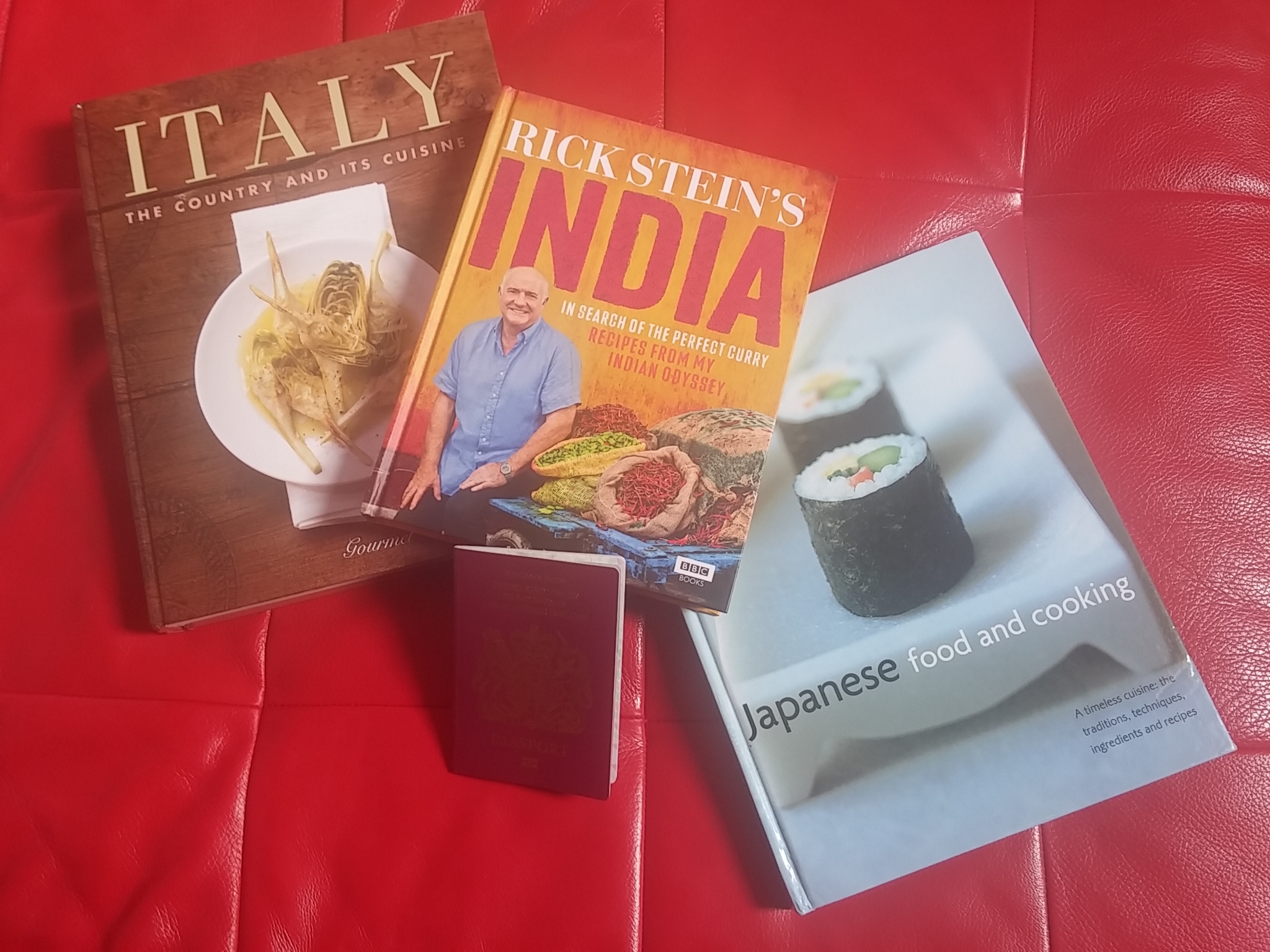Henry Ward Beecher:
Books are the windows through which the soul looks out. A home without books is like a room without windows.
During our monthly meeting at Derby BookCake Club earlier this week, the talk invariably strayed from our book discussion (The Big Over Easy, Jasper Fforde, more on that later), to cookery books. A few favourite cooks and chefs were mentioned, with Delia, Mary Berry, Nigella, Hugh Fearnley-Whittingstall, Lorraine Pascal and my favourite James Martin leading the topic of conversation.
And because World Book Night is less than 48 hours away, I thought I’d write a post on cookbooks that I’m currently reading. Yes, I read cookbooks. They’re my favourite genre to read (right after psychological thrillers, crime dramas, and whodunnits). In fact, Friday nights usually see me curled up with a cookbook reading in bed. I usually have a note-book on my bedside cabinet, in case a recipe strikes my fancy, or I feel inspired to think up a recipe from scratch, whilst leafing through my beloved cookbooks.
How many cookbooks do you have? As a self-confessed bibliophile since the age of circa 10, Henry Ward Beecher’s quote (above) struck a chord with me in my formative years and continues to awe me three decades on. I may not have much in common with Henry Ward Beecher (he was a strict tee-totaller who underwent an infamous trial for adultery), I can however agree on his passion for books.
Here is a list of my top three favourite ones this month.

- Italy: The Country and its Cuisine (Ingeborg Pils, Stefan Pallmer)
This is a beautiful cookbook which also doubles up as a coffee table book. The book is helpfully split into courses, then sub-divided into geographical regions. I think this is really clever, as it gives you a solid understanding of the area, which should you visit, you will then be prepared for the food native to that particular region.
My favourite recipe from this book is melanzane alla campagnola (country-style marinated aubergine slices). Aubergines get a lot of bad press, but if cooked right, they can be silky and flavourful. Salting the chunky aubergine discs, which draws out the liquid, then baking them renders this a great vegetable to work with. Aubergines are a blank canvas. They absorb a variety of flavours (I recommend wild garlic), are one of the most versatile vegetable on the planet, and should be in the fridge of every household in the country.
- Japan: Japanese Food and Cooking (Emi Kazuko, Yasuko Fukuoka)
I’m a big fan of cookbooks with pictures, which I find helpful and more user-friendly than blocks of resolute text. This is one of the few cookbooks I have come across that has pictures on every page; we are even shown how to shape carrots by hand into intricate flowery petals.
My favourite recipe from this book is salmon teriyaki. The beauty of Japanese cooking is that for the most part, it is healthy and wholesome (think of sushi, miso soup and udon noodles). This terrific teriyaki is my go-to dish whenever I want something low maintenance and light on preparation. I add in a good glug of honey in the sake-soy marinade, which accelerates the caramelisation process and renders the salmon to take on a beautiful burnished hue. Although the cooking time is around six minutes, I always undercook the fish by two minutes, as it carries on cooking with residual heat.
- India: Rick Stein’s India (Rick Stein)
I love Indian food having grown up with this cuisine and think this is one of the easiest, exotic cuisines in the world. I’m always surprised to hear that Indian cookery is off-putting to people as it sounds too complicated. Yes, there are a few spices to wrap your head around. But once you understand their flavour profile and stock up (they are relatively cheap when bought from Asian supermarkets which specialise in world foods), your world will be transformed into a delicious, mystical place.
This book is great for new and seasoned cooks. It is split into staple ingredients from gosht (dark meat) to meetha (desserts). It also includes street-food, which continues to be one of the big foodie trends in 2017.
My mother has a discerning palate (that’s where I get it from) and she is always happy when I rustle up one of my favourite recipes from this book – butter chicken. This dish is similar to chicken tikka, being creamy, luxurious on the palate, and one to cook for a special occasion. It does require two sets of marinades for a total of five hours, and for this reason, is best started one day prior to being eaten. It’s really worth it, as the garlic, ginger and Kashmiri chili powder creates a magical concoction giving the meat different layers of flavours.
Whatever your threshold on the Scoville scale (100 for paprika, 2.2 million for the world’s hottest chilli, the Carolina Reaper) you’ll find some flavourful authentic Indian dishes in this cookbook. Why? Because Rick goes direct to the source, and a few of his recipes here are faithful adaptations of those local and native to India.
Are there any cookbooks that you can recommend? Who are your go-to cooks / chefs / cooking inspirations? I would love to know.
